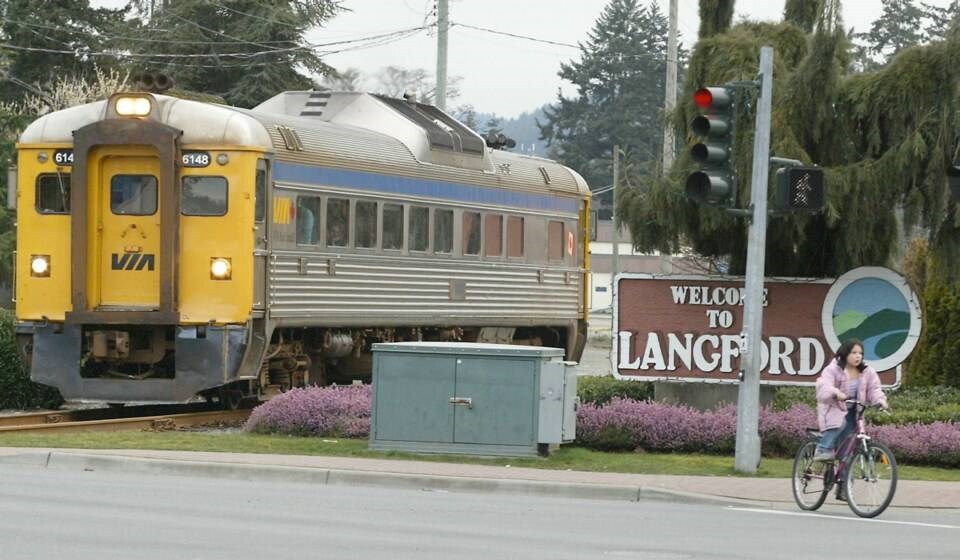A commentary by a Victoria resident.
The court-imposed March 2023 deadline for deciding the future of the Vancouver Island Rail Corridor between Victoria and Nanaimo is quickly approaching.
The decision seems to be whether the corridor will bring environmentally friendly modes of transportation back to one of the greenest regions of the country, or whether land can be returned to first nations in a region where reconciliation is also incredibly important to locals.
I’m not usually an optimist, but I think in this instance, the government might be able to accomplish both goals at once.
It all comes down to geography. The corridor should be used for rail in the southern part of the island, but returned to First Nations (and put to other uses) in the northern part of the corridor.
Restoring rail is most useful along the southern end of the route, where traffic bottlenecks between areas with affordable housing in Langford-Colwood and employment centres in Victoria show the need for more public transportation along this part of the corridor.
A light rail line could ease congestion. Many think Victoria is too small for its own rail transit line, but the Capital Regional District is not that much smaller than Quebec City, which is building a tramway.
The light rail would likely be very popular with voters in the region: Recent local elections have been won by slates promising to increase housing density and build more cycling infrastructure. A train would likely be popular with the same base.
Beyond the Capital Regional District, there is a bottleneck along the Malahat highway which a commuter rail line could likely ease: even just a simple branch to a park-and-ride south of Shawnigan lake could help take cars off the road, and clear up congestion on this crowded artery.
Good thing there are already train tracks running along this highway, just waiting to be put to use.
The First Nations which are calling for the land to be returned are all on the northern end of the rail corridor, notably the Snaw-Naw-As Nation.
By Vancouver Island standards, the area south of Nanaimo tends to be flat, spacious, has fewer traffic bottlenecks, and doesn’t have as much need for rail transportation. I see no problem with land being returned to First Nations where requested in this area, and used for other purposes elsewhere.
The seizure of the land for railways is certainly a sore spot for the First Nations, and it’s something we can make right simply by giving up something we haven’t used in more than a decade.
As for what to do with the rest of the corridor, I particularly like the suggestion that the Snaw-Naw-As nation made of using the corridor as a multi-use trail, so that Islanders could safely cycle from Victoria to Nanaimo without having to risk their lives by sharing the road with car traffic.
Similar trails, such as the 644-kilometre Four Rivers trail connecting Seoul and Busan in South Korea, or the 988-kilometre Cycle Route One which encircles the island of Taiwan have been major ecotourism draws which help bring consumers to small towns.
I know about these trails halfway around the world because they are popular vacation spots for Victorians who are eager to try out bikepacking or bike camping, but aren’t willing to risk getting hit by a vehicle on a steep and narrow Island road.
Imagine the benefit to small towns along the route if we could keep some of those tourism dollars at home.
If you’re having trouble imagining it, look at Vancouver Island’s most popular Youtubers, Levi and Leah, who drew in an audience of 167,000 in part by making videos of their bike trip from Victoria to Nanaimo as a way to travel without generating too many carbon emissions.
Though the two didn’t complain about it, I find it a little embarrassing that the only safe way to make the trip involves taking a ferry to the mainland, then taking a bus up to Richmond before you can even start biking through Vancouver.
The government certainly has a lot of exciting opportunities before it in deciding what to do with this rail corridor in March. Let’s see if it actually takes any of them.



